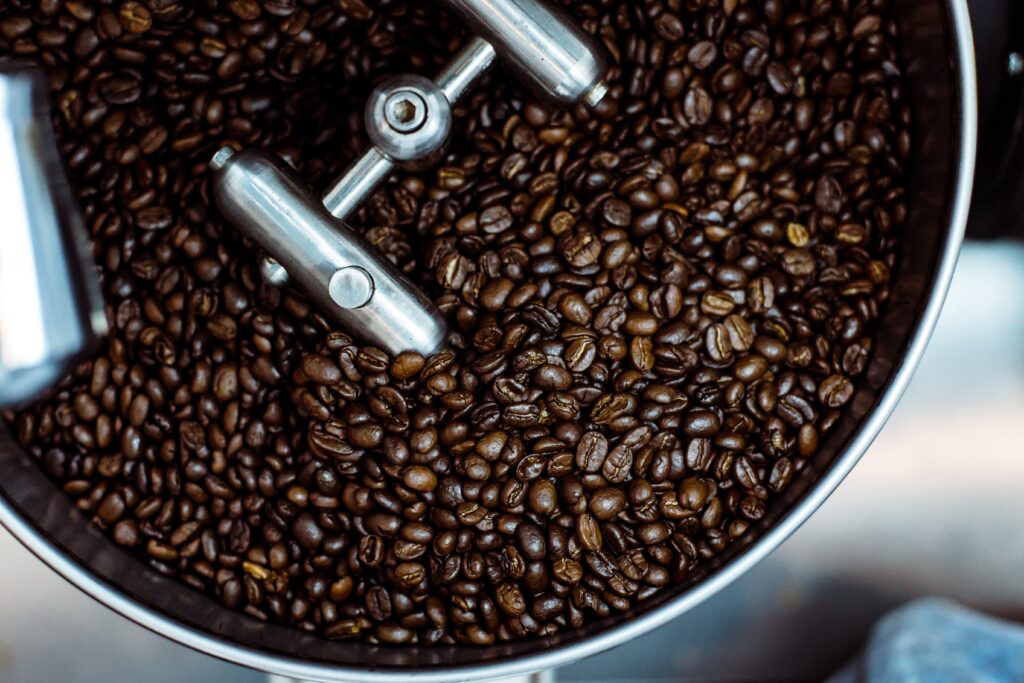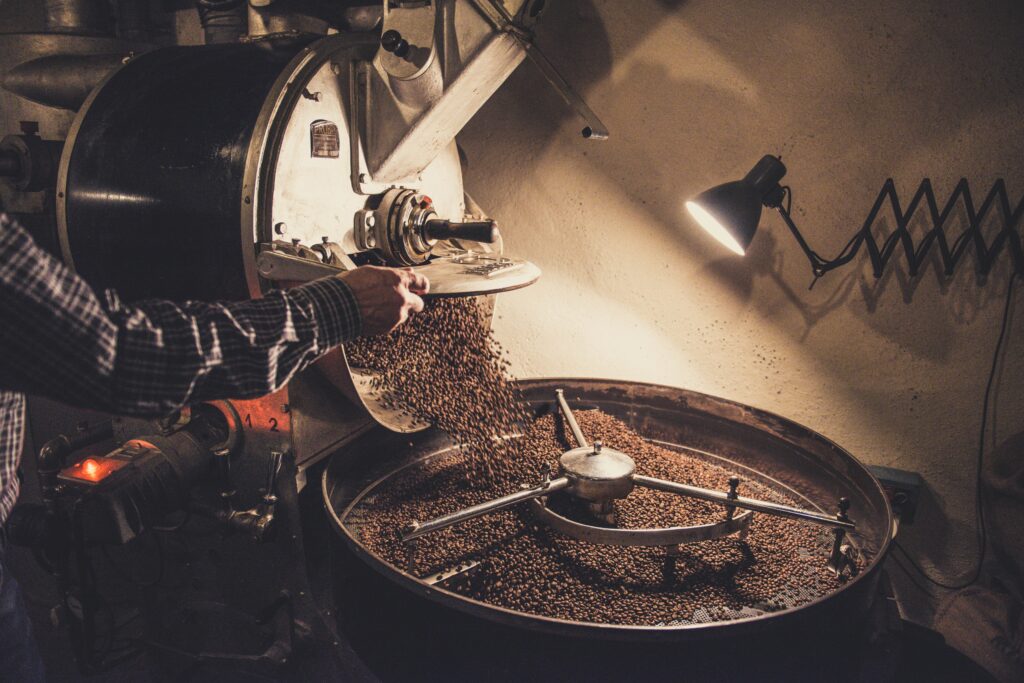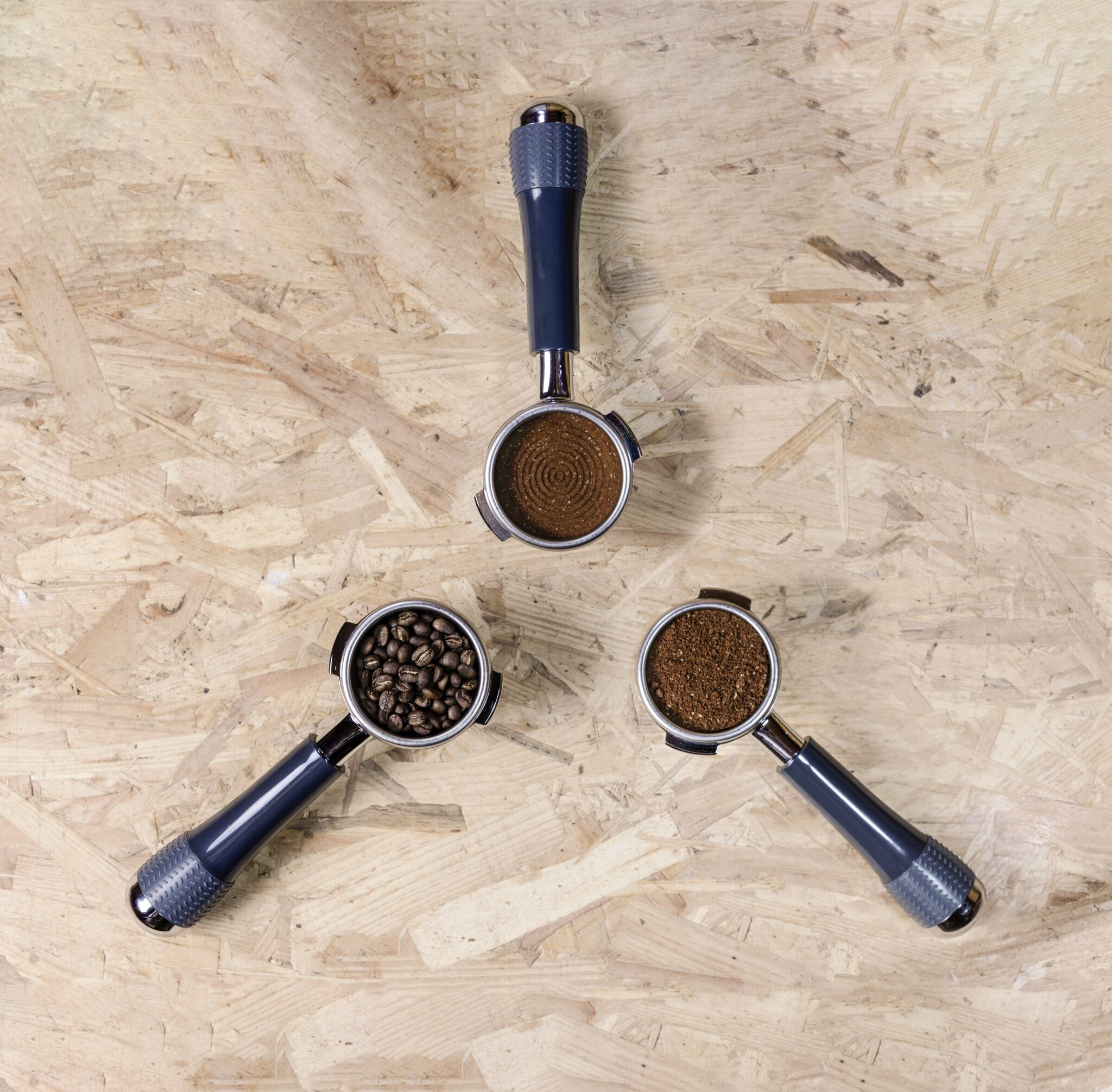Do you wonder why all coffee doesn’t taste the same?
While some have traces of sweetness and fruity flavor, others maintain their rich texture and chocolate flavor.
This difference is mainly because of the coffee roast.
Before you get to enjoy coffee beans in your cup, there is a whole roasting process that makes all the difference.
Choosing between a dark roast vs. a light roast can be tricky. So let us walk you through these two coffee roasts.
Light Roast
 Most of the top light roast coffee beans available in the market have a few things in common. They come in bright packing and complicated flavors, taste like toasted grain, and have a fruity aroma.
Most of the top light roast coffee beans available in the market have a few things in common. They come in bright packing and complicated flavors, taste like toasted grain, and have a fruity aroma.
These coffee beans are light brown with no oil on the surface. That is because we don’t roast these beans long enough for the oil to reach the surface.
-
What Is the Roasting Process for Light Roast Coffee?
Light roast coffee beans are more complex and the body is thinner as compared to other types of coffee roasts.
The temperature to roast these beans is usually somewhere between 356°F to 401°F.
When the temperature reaches 370-390°F, the coffee bean cracks and expands. That is what we call the first pop – light roast coffee beans aren’t roasted beyond the first pop.
The heating process forces water out of the coffee bean through evaporation. Since we usually don’t roast coffee beans for too long, they have more moisture and are relatively dense.
-
What Is the Flavor Profile of Light Roast?
Most of the time, light roast coffee keeps its original flavor. It even brings out the natural and subtle characteristics of the coffee itself. You won’t see any caramelized sugars or oil on these beans, giving them a vibrant and unique flavor profile.
As for the aroma, these beans have a vibrant fruity smell. That is because they are usually grown and processed well.
Also, light roast coffee is usually high in acidity.
Dark Roast

Dark roast coffee has a shiny black or dark brown, oily surface.
These coffee beans are roasted for a more extended period and at higher temperatures as compared to their light roast counterparts.
Dark roast carries a lot of bitterness to their flavor. The original flavors are lost during the roasting process, giving them a full and bold taste instead.
This, however, doesn’t make these beans bland or flavorless. In fact, consumers love both these roasts equally.
-
What Is the Roasting Process for Dark Roast Coffee?
Dark roast coffee beans are roasted between temperatures 465-480°F. This is usually done up to a point of the second pop, or seconds beyond that. To avoid the flavor of tar or charcoal, we don’t roast dark roast beans over 490°F.
Since dark roast coffee beans are roasted for longer periods, they tend to lose moisture. This makes them less dense and gives a single-note flavor.
-
What Is the Flavor Profile of Dark Roast?
If you are someone who loves coffee that tastes like nuts and caramel with just the right amount of bitterness – the dark roast coffee is for you.
With more oil on their surface, dark roast beans have a heavy body. They are relatively less acidic and give deeper and darker coffee flavors. Some coffees heavily depend on the dark roast due to their chocolate and nut flavors.
Dark roasts do have several names. Some of the most famous ones are Italian Roast, French Roast, Continental Roast, Spanish Roast, New Orleans Roast, etc.
The Myth About Caffeine
 It is a well-known fact that caffeine is an integral part of coffee.
It is a well-known fact that caffeine is an integral part of coffee.
Whether it gives you the desired amount of alertness and energy or it makes you sleepy or tired – caffeine will always remain an essential part of your cup of Joe.
Many people believe that dark roast has more caffeine than light roast, just because it tastes stronger.
That isn’t necessarily true.
-
Caffeine Levels by Weight
In a broader perspective, coffee experts believe that the caffeine level in both coffee roasts is essentially the same.
If measured by weight, 100g of dark roast coffee will have the same caffeine as 100g of light roast coffee.
However, slight variations are possible, but not on the darker roast side. Since light roast coffee beans are denser, they sometimes tend to retain slightly more caffeine than darker coffee roasts.
-
Caffeine Levels by Grind Size
The grind size also determines caffeine levels. During the first 10-40 seconds, caffeine content increases. After 40-42 seconds, the caffeine level will no longer increase, making this the ideal grind time.
Dark Roast vs Light Roast – Which One Is Healthier?
You might hear a lot about light coffee roasts having more antioxidants and other positive health impacts than dark roasts – again, no scientific proof behind that.
In general, coffee comes with plenty of health benefits. The type of roast should not make any tangible difference.
Our Final Word on Dark vs Light Coffee Roasts
If you are someone relatively new to the coffee world, you might not want to go with the darker coffee roasts right away.
However, regular coffee drinkers usually love to add that boldness and bitterness to their cup of Joe.
On the other hand, a light roast is ideal for you if you prefer fruity bright flavors.
Nonetheless, it all depends on your mood and the way you like to enjoy your cup of coffee. Both light and dark roasts have their own unique flavor profiles and rich aromas.
There is no winner or loser here – your taste buds and coffee cravings will define the level of roast you would want to have.


